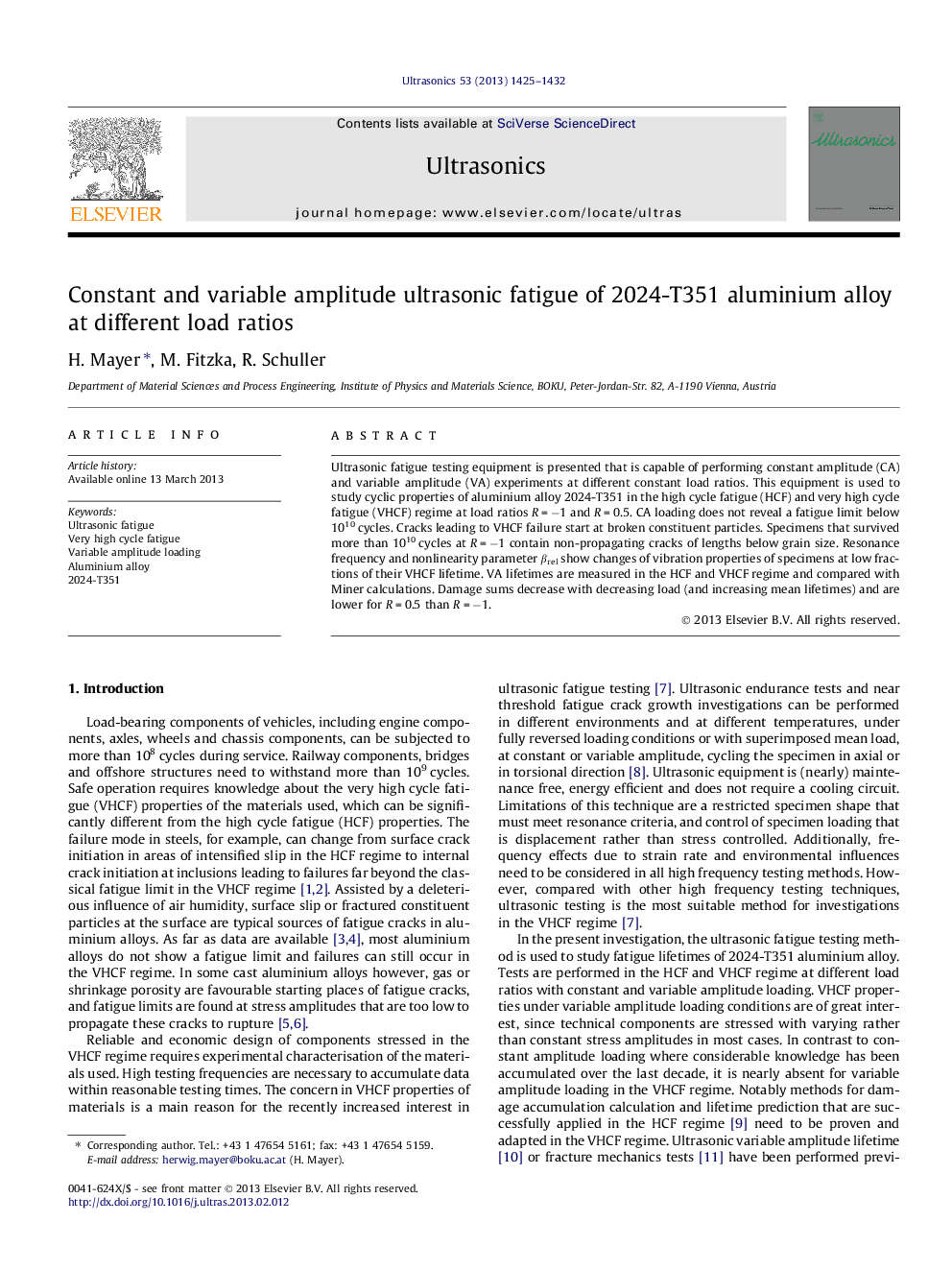| Article ID | Journal | Published Year | Pages | File Type |
|---|---|---|---|---|
| 1759126 | Ultrasonics | 2013 | 8 Pages |
•Ultrasonic fatigue tests are performed with variable amplitude at R = −1 and R = 0.5.•Aluminium alloy 2024-T351 does not show a fatigue limit below 1010 cycles.•Cracks leading to VHCF failure are initiated at fractured constituent particles.•Cracks smaller than grain size can be present in specimens surviving 1010 cycles.•Damage sums are lower for R = 0.5 than for R = −1 and decrease with decreasing load.
Ultrasonic fatigue testing equipment is presented that is capable of performing constant amplitude (CA) and variable amplitude (VA) experiments at different constant load ratios. This equipment is used to study cyclic properties of aluminium alloy 2024-T351 in the high cycle fatigue (HCF) and very high cycle fatigue (VHCF) regime at load ratios R = −1 and R = 0.5. CA loading does not reveal a fatigue limit below 1010 cycles. Cracks leading to VHCF failure start at broken constituent particles. Specimens that survived more than 1010 cycles at R = −1 contain non-propagating cracks of lengths below grain size. Resonance frequency and nonlinearity parameter βrel show changes of vibration properties of specimens at low fractions of their VHCF lifetime. VA lifetimes are measured in the HCF and VHCF regime and compared with Miner calculations. Damage sums decrease with decreasing load (and increasing mean lifetimes) and are lower for R = 0.5 than R = −1.
